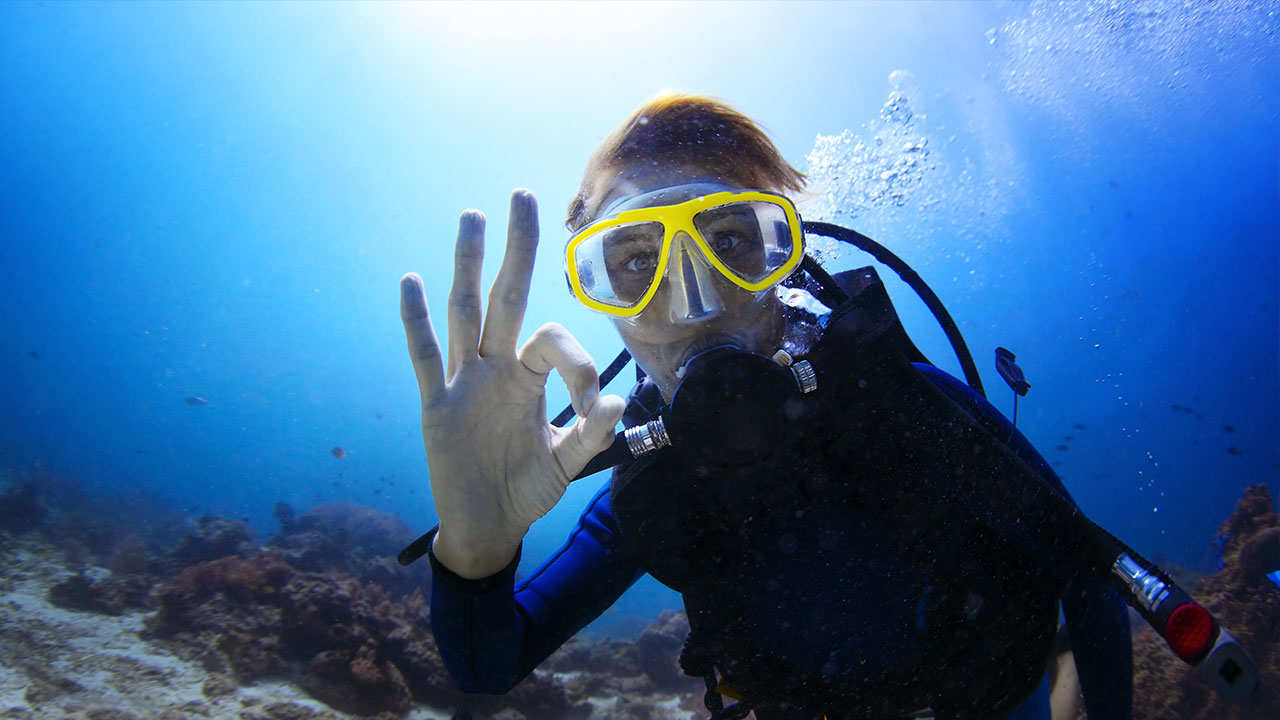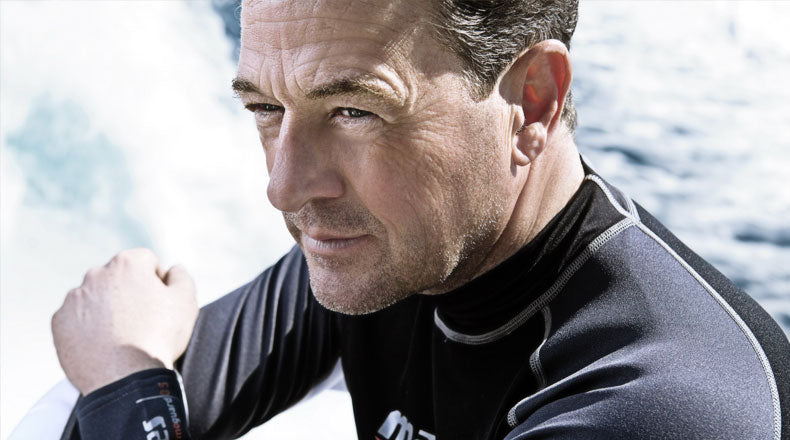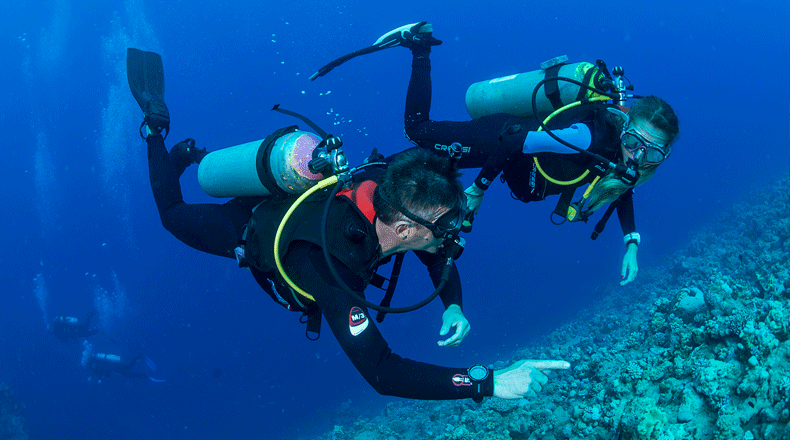Scuba Diving While Pregnant - Research and Practical Considerations

Is it ok for a woman to scuba dive while pregnant? The simple answer to this question is that the American College of Obstetricians and Gynecologists, the Divers Alert Network (DAN) and most dive organizations recommend no diving for the duration of the pregnancy. However, the rationale behind the assumption that diving and pregnancy don’t mix is not so straightforward.
For ethical reasons, the research on the subject is very limited. The advice of medical organizations is based on anecdotal evidence, surveys of women who have dived while pregnant, and studies carried out on animals. So, in this article, we have decided to review the published literature that provides a foundation for the discussion, explain a bit more about the possible risks of diving for the expectant mother and the baby, as well as look at the evidence that exists to support them.
Survey Results
In 1980, the Undersea Biomedical Research journal conducted a survey of 208 female divers who had recently given birth. 109 of these women stated that they had dived during pregnancy. The “did dive” group reported a 5.5% incidence of birth defects, compared to 0% in the nondiving respondents. As a result, the author of the research concluded that the women who did dive had a statistically greater likelihood of birth defects or other pregnancy complications. However, since the incidence of birth defects in the total population of the United States is between 3% and 5%, the 5.5% incidence of birth defects in the small “did dive” group does not differ significantly from the general population. It is also worth noting that the reported complications could have been the result of any number of unrelated factors and cannot be conclusively attributed to diving.
Further survey data have been hard to obtain since the number of women diving while pregnant has drastically declined. In a more recent survey of 1037 females, only 15 (1.4%) dived while pregnant. Eight of these 15 women had pregnancy-related complications. Five were unlikely to be diving-related, however, two spontaneous fetal losses occurred: one first trimester fetal demise after 2 dives to a maximum of 60 fsw and one late in-utero death, possibly attributable to a cord accident. A third infant was noted to have a congenital heart defect. The mother had performed 50 decompression dives to a maximum of 120 feet of seawater. Given the small sample size and the likelihood of selection bias in those responding to the survey, the gathered data can be considered inconclusive.
Animal Studies
Hyperbaric chambers, which can simulate the increased pressure of diving, have been used to test different species of animals.
Decompression studies conducted on sheep demonstrated that a fetus may develop bubbles before the mother displays clinical symptoms of decompression sickness (іheep studies are relevant because the placentas of sheep and humans are similar). When mothers did show signs of DCS, the symptoms were even more aggravated in the fetus. Often, the effects of DCS in the offspring manifested as life-threatening heart arrhythmias, weakened limbs, and spinal defects. Because the fetus cannot rely on its lungs to filter bubbles from its blood, even ‘silent bubbles’ that are harmless in adults could cause potentially fatal arterial gas embolisms for the unborn baby. Although scientists cannot be completely certain as to the validity of animal models, sheep studies are compelling enough to conclude that human fetus probably is at greater risk of injury than the diving mother. The potential risk consists primarily of injury secondary to arterialized intravascular bubbles.
Rodents, which have large litters and relatively short gestational period, have been used to study the effects of hyperbaric oxygen (HBO) on developing fetuses. Rats exposed to 100% oxygen at 2 and 3 ATA for 6 hours were found to have an increase in fetal cardiovascular malformations as well as an increased rate of fetal reabsorption. Rabbits exposed to 3.6 and 4.0 ATA of oxygen for 2 to 3 hours developed retrolental fibroplasia. Female hamsters experiencing untreated DCS had offspring with severe limb and skull abnormalities. Pregnant hamsters experiencing HBO-treated decompression sickness also bore offspring with defects, though with less frequency than the untreated group. In a different study, however, hamsters exposed to the standard US Navy Table 6 (the most commonly utilized recompression treatment profile for recreational divers treated in the United States), demonstrated no increased rate of birth defects.
Pregnant women have been exposed to hyperbaric oxygen therapy in emergent situations (such as acute carbon monoxide poisoning) on numerous occasions, and there have been no reports of untoward effects on the fetus. This together with the data available from animal studies suggests that hyperbaric oxygen represents less of a risk to the fetus than untreated maternal DCS. Thus, if the pregnant woman does choose to dive and suffers DCS, she should be treated by recompression therapy just as any nonpregnant diver should.
Practical Considerations
In addition to possible risks to the fetus, changes in a woman’s body during pregnancy might make diving more problematic. Swelling of the mucous membranes in the sinuses could make equalizing more difficult, and nausea, aggravated by seasickness, may increase discomfort. A growing baby bump can pose a problem in fitting suits, buoyancy compensators, and weight belts. As a result, diving may become simply too uncomfortable to enjoy.
Furthermore, there is the potential risk for self-blame and anguish on the woman’s part if she thinks that her decision to go scuba diving resulted in any negative outcome for the pregnancy, even if that was not the case.
The Bottom Line
Although the research on the topic is limited and the results are, in many cases, inconsistent, most dive professionals and medical researchers come to the conclusion that it is best to adopt a “better safe than sorry” policy and avoid diving during pregnancy. While the increased risks are determined to be quite low, the consequences could be devastating to all involved. After all, pregnancy only lasts 9 months and once the baby is delivered, the mothers will be perfectly able to dive again.
It’s worth pointing out that although it’s unwise to dive once you know you’re expecting, those women who unwittingly dive during the first few weeks of their pregnancy should not panic - the likelihood of an issue occurring, as a result, is small. If you’re concerned, make an appointment for a check-up to put your mind at ease.
When Can You Return to Diving
The recommendations regarding a return to diving after childbirth vary based on the type of delivery and should always be discussed with your doctor. Most women, however, can resume diving in about 21 days, if they had a normal vaginal delivery without complications or in 8 to 12 weeks in case of an uncomplicated cesarean section. If a woman is put on bed rest due to complications, waiting more than 12 weeks is prudent because of deconditioning and loss of aerobic capacity and muscle mass. Following a miscarriage, a woman can return to diving when the physician releases her for full, unrestricted activity.
Diving is considered safe for mothers who are breastfeeding. Nitrogen does not accumulate in breast milk, so there is no risk of the baby absorbing dissolved nitrogen through breastfeeding. That being said, diving can be dehydrating and may thus interfere with milk production, so appropriate hydration is important.
Other Water Activities You Can Do While Pregnant
As with scuba diving, the data on freediving and pregnancy are limited. Most of what we know comes from Japanese Ama divers and Korean Haenyeo divers. Freediving for pearls and abalone is a way of life for these divers, most of whom are women. Many Ama divers continue to freedive well into pregnancy without any adverse effects, although profiles are modified based on gestation. Thus, conservative freediving during pregnancy may be considered a safe activity for enjoyment or relaxation (provided good maternal and fetal health), but it is still not an ideal form of exercise.
Swimming, aqua aerobics, and snorkeling, on the other hand, are all great activities to do during pregnancy. A Brazilian study published in the journal Reproductive Health in 2008 tested the safety of water aerobics on pregnant women. The report concluded that, even among women not accustomed to exercise, water aerobics was safe during pregnancy. Additionally, in 2010, a group of Dutch scientists has conducted a study to test whether swimming in pool water may be associated with adverse effects on various reproductive outcomes (as a result of exposure to disinfection by-products in swimming pool water), and found that no association was apparent. Furthermore, this same study revealed that women who swam in early/mid-pregnancy had a slightly reduced risk of giving birth preterm or giving birth to a child with congenital malformations, compared with nonexercisers.
The benefits of swimming, aqua aerobics and snorkeling include:
- Relieving ankle and foot swelling. Submersing your limbs in water helps push fluids from your tissues back into your veins (where it goes to your kidneys and then out through your urine). It also boosts your circulation, which keeps blood from pooling in the lower limbs.
- Easing sciatic pain. Baby’s floating right along with you (instead of pressing down on your sciatic nerve).
- Reducing morning sickness. Many women report that the cool water provides welcome relief from nausea.
- Improving your labor and delivery experience. Mild exercise, such as swimming water aerobics or snorkeling helps to maintain muscle tone and increases your endurance - both of which you’ll be thankful for when it comes time to push the baby out.
What’s more, while snorkeling you can still enjoy the marine life from the surface.
References
- Baciuk, E. P., Pereira, R. I., Cecatti, J. G., Braga, A. F., & Cavalcante, S. R. 2008. Water aerobics in pregnancy: Cardiovascular response, labor and neonatal outcomes. Reproductive health, 5, 10. doi:10.1186/1742-4755-5-10
- Bolton ME. Scuba diving and fetal well-being: A survey of 208 women. Undersea Biomed Res. 1980; 7(3):183-189.
- Divers Alert Network. The Risks of Diving While Pregnant. Reviewing the Research [Online]. 2007; Available from: URL: https://www.diversalertnetwork.org/medical/article...
- Ferm VH. Teratogenic effects of hyperbaric oxygen. Proceedings of the society for experimental biology and medicine 1964;116:975-6.
- Ferm, VH. The use of the golden hamster in experimental teratology. Lab Animal Care 1967;17(5):452-62.
- Fife WP, Simmang C, Kitzman JV. Susceptibility of fetal sheep to acute decompression sickness. Undersea Biomed Res. 1978;5(3):287-292.
- Fife and Fife, Should Pregnant Women Scuba Dive? Journal of Travel Medicine, Volume 1, Number 3
- Juhl, Mette & Kogevinas, Manolis & Andersen, Per & Andersen, A-M & Olsen, Jørn. 2010. Is Swimming During Pregnancy a Safe Exercise?. Epidemiology (Cambridge, Mass.). 21. 253-8.
- Powell MR, Smith MT. Fetal and maternal bubbles detected noninvasively in sheep and goats following hyperbaric decompression. Undersea Biomed Res. 1985; 12(1):59-67.
- St Leger Dowse M, Gunby A, Moncad R, Fife C, Bryson P. Scuba diving and pregnancy: can we determine safe limits? Journal of Obstetrics and Gynaecology 2006;26(6):509-13




